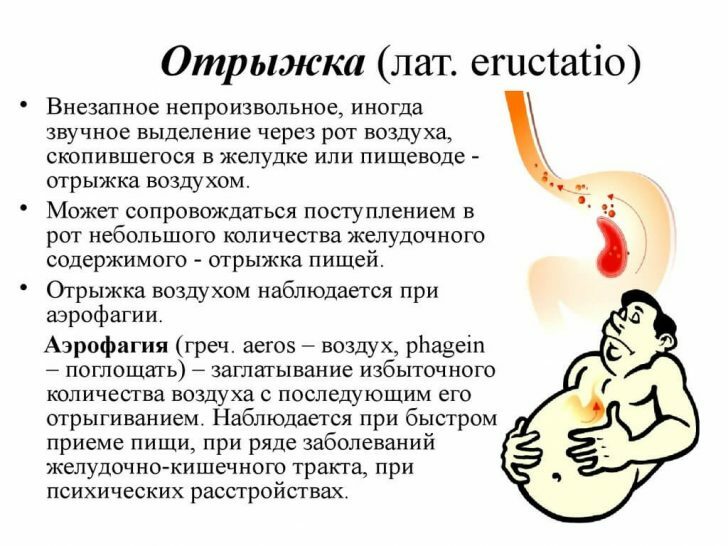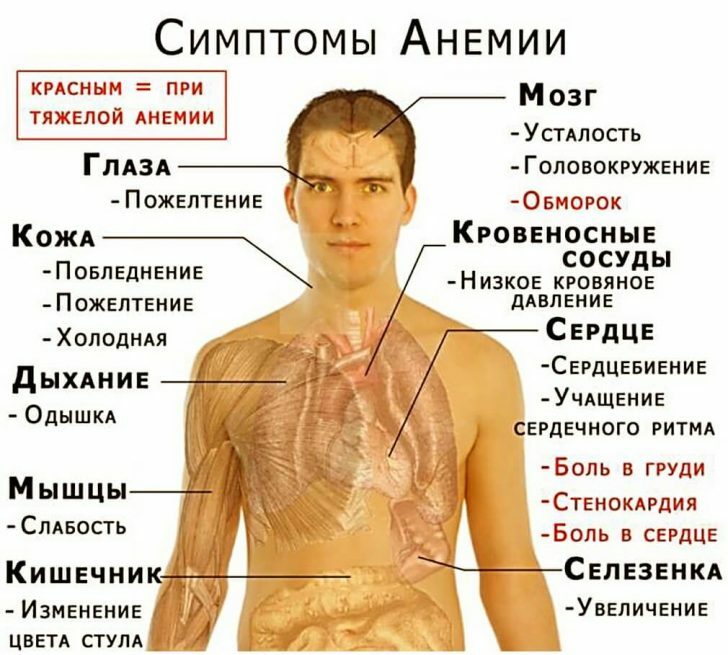Snoring: Causes and Methods of Treatment
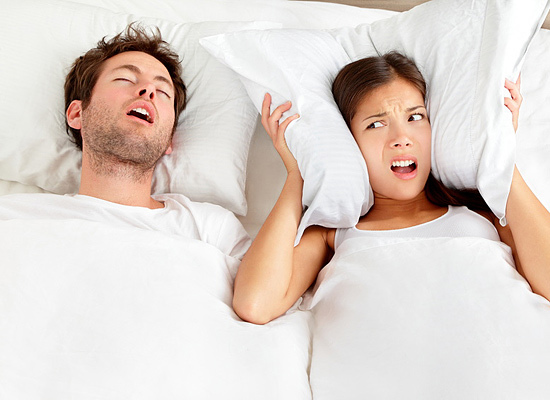 According to statistics, snoring occurs in every fourth adult male.This problem becomes more pronounced in the elderly.So, 60% of men over sixty years old snore.But snoring occurs not only in men, but also in women.This unpleasant phenomenon can become a real problem in family life, because spouses who are in the same bed with a snoring person simply can not get enough sleep.In addition, snoring can be a symptom of such a threatening state as obstructive sleep apnea syndrome.
According to statistics, snoring occurs in every fourth adult male.This problem becomes more pronounced in the elderly.So, 60% of men over sixty years old snore.But snoring occurs not only in men, but also in women.This unpleasant phenomenon can become a real problem in family life, because spouses who are in the same bed with a snoring person simply can not get enough sleep.In addition, snoring can be a symptom of such a threatening state as obstructive sleep apnea syndrome.
Reasons for snoring
Snoring is a low-frequency sound that occurs in a dream when breathing.It arises from the relaxation of the muscles of the pharynx and the soft palate.Because of this, the inhaled air stream is not able to fully flow through the upper respiratory tract.This is how snoring occurs.
Allocate such causes of snoring:
- Congenital features - an elongated tongue, a large tongue;
- Curvature of the nasal septum;
- Hypertrophic palatine tonsils( tonsillitis);
- Increased pharyngeal tonsil( adenoids);
- Polyps in the nose;
- Rhinitis;
- Overweight;
- Drinking alcohol, hypnotics and sedatives;
- Age changes in the nasopharynx.
Congenital features of
Congenital features that can cause snoring include an elongated tongue, a long sky and a large tongue.
The palatine tongue is an outgrowth of the soft palate hanging over the entrance to the oropharynx.The elongated tongue and soft palate overlap the lumen of the pharynx.These congenital anatomical features prevent the passage of air through the upper respiratory tract, which is why snoring occurs.Often such a defect is accompanied by a congenital weakness of the muscles of the soft palate.It is characteristic that the relaxation and vibration of the muscles in the dream is further aggravated.
Curvature of nasal septum
This is a fairly common cause of snoring, found in all age groups.The nasal septum is a plate that divides the nasal cavity into two halves.To the curvature of the septum often lead to injury to the nose.
With a curved baffle, the flow of air is difficult.In addition, this defect contributes to the onset of chronic rhinitis, which further complicates nasal breathing.
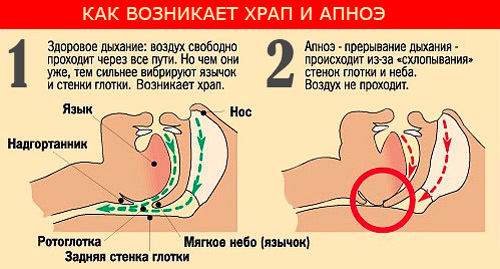
Hypertrophic palatine tonsils
Palatine tonsils hypertrophied often due to infection.Increased palatine tonsils overlap the lumen of the oropharynx.Air, passing through the narrowed lumen of the oropharynx, causes peculiar fluctuations in the muscles of the pharynx and the appearance of snoring.
People with this disease have difficulty breathing.In conversation with such patients pay attention to heavy, frequent breathing and a slightly open mouth.
If a person has a big tongue, while sleeping, when the muscles relax, the root of the tongue sinks into the oropharynx, thereby blocking its lumen.
Adenoids
This is an increase in the pharyngeal tonsil that obstructs nasal breathing.The disease is provoked by infectious or allergic agents.
Often children suffer from adenoids.
We recommend to read:In adenoids, the lymphoid tissue, from which the pharyngeal tonsil consists, expands and increases in volumes, thereby blocking the lumen of the nasopharynx.Therefore, the air breathed in the dream passes with difficulty, while provoking vibrational movements of the muscles of the soft palate and tongue.The relaxed muscles of the pharynx vibrate because of what actually causes snoring.Adenoids are also accompanied by difficult, noisy breathing and hearing impairment.
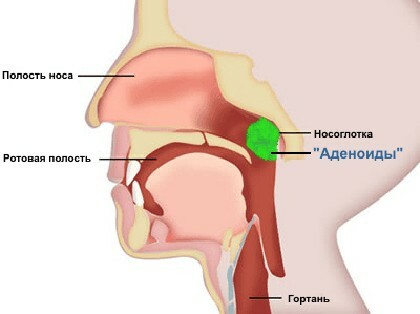
Polyps in the nose
Polyps are extensions of the mucous membrane in the nasal cavity or the paranasal sinuses.Polyps block the nasal passages, thereby preventing the flow of air.
It should be noted that polyps in the nose - this is a very common disease among the adult population.Symptoms of the disease do not appear immediately, but when polyps reach large sizes.Patients with such a disease complain not only of snoring, but also the difficulty of nasal breathing, nasal congestion.On the background of impaired nasal breathing, infection of the upper respiratory tract is often associated.
Rhinitis
Rhinitis is an inflammation of the nasal mucosa.Catarrhal rhinitis is caused by infectious agents.With catarrhal rhinitis, the nasal mucosa swells, the lumen of the nasal passages narrows.The presence of mucus in the nose further prevents the movement of air through the nasal passages.
Vasomotor rhinitis is a manifestation of an allergic reaction.The vessels of the nose expand, mucus is released, and the mucous membrane of the nose swells.All this leads to difficulty in nasal breathing and the appearance of snoring.
Recommended:Overweight
People with excess weight snore about five times more often than with normal body weight.The reason for this is very simple: highly developed fat tissue in the neck compresses the upper respiratory tract.In addition, against the background of obesity, the syndrome of obstructive sleep apnea often develops.
There is a very interesting feature: the presence of snoring and the syndrome of obstructive sleep apnea leads to the progression of obesity!This is due to the fact that with insufficient intake of oxygen into the body during snoring, metabolism slows down.
Drinking alcohol and medicine
It is known that during sleep the muscles relax, the same applies to the muscles of the pharynx, the soft palate.Alcohol and sedative drugs lead to an even greater relaxation of the muscles, including the respiratory tract.That's why drunk people snore so loudly.
The recommendation is simple: give up this bad habit altogether or use a moderate amount of alcohol a couple of hours before bedtime.
Age changes in the nasopharynx
With age, the tone of the throat muscles decreases, and the presence of chronic infections of the upper respiratory tract should be added to this.Because of the decreased muscle tone, when the elderly person assumes a horizontal position, the muscles of the pharynx sag.When air passes through the upper respiratory tract, it causes fluctuations in the soft palate and tongue.

Obstructive sleep apnea syndrome
Obstructive sleep apnea syndrome is called a breathing stop during sleep for more than ten seconds. Sleep apnea is of three types:
- Central - triggered by a violation of the respiratory center of the central nervous system;
- Obstructive - caused by narrowing of the upper respiratory tract;
- Mixed - includes components of both central and obstructive apnea.
Adenoid-tonsillar hypertrophy, congenital abnormality of the tongue and soft palate, obstruction of the larynx by mucus drained from the nose can lead to an obstructive stop of breathing.
As you know, in the deep phase of sleep, the muscles of the body, including the upper respiratory tract, relax.Add more to this obstruction of the upper respiratory tract due to the conditions described above.As a result, there is a collapse of the upper respiratory tract and a difficulty in passing the air flow.
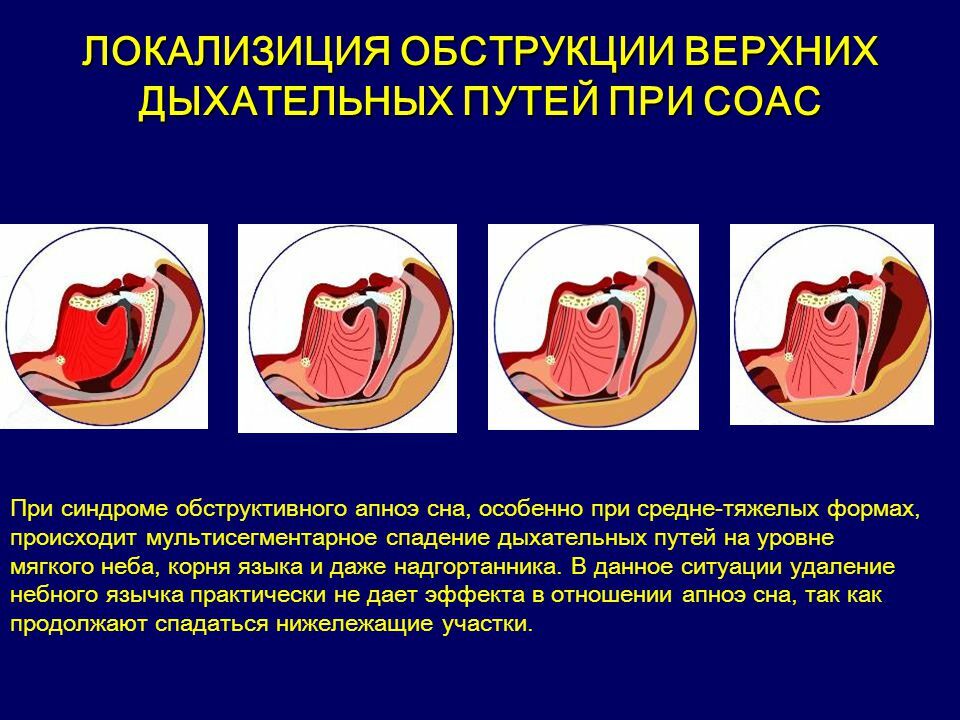
Because of this, a breath stops from a few seconds to a minute in a dream.The longer the delay in breathing, the worse, because oxygen does not reach the organs to the fullest.At a certain stage, an awakening of a person occurs or a transition to the superficial phase of sleep, during which snoring occurs.
Symptoms of obstructive sleep apnea syndrome are:
- Drowsiness during the day;
- Fatigue;
- Increased blood pressure.
The syndrome of obstructive sleep apnea primarily increases the risk of cardiovascular disease.Moreover, sleep apnea can even lead to a fatal outcome, caused by cardiac arrhythmias.
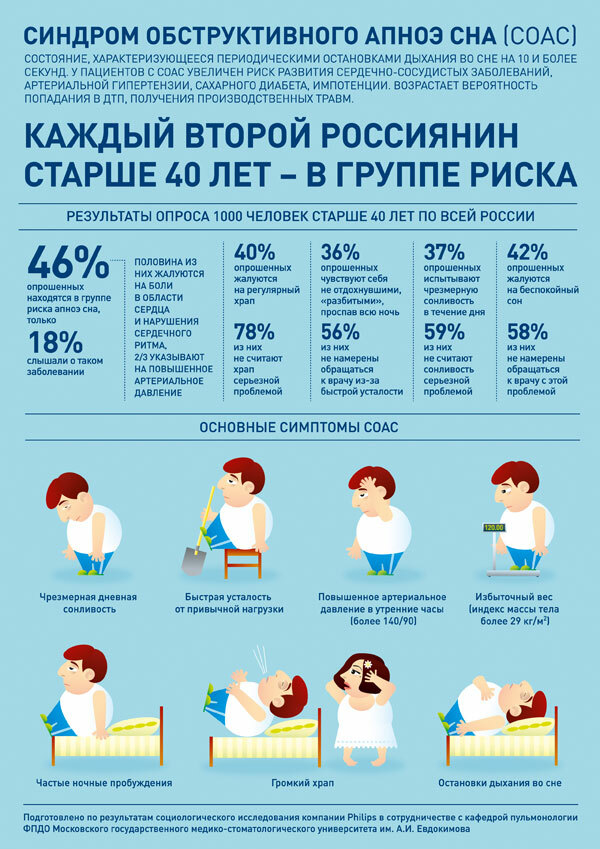
Note: although snoring is an indicator of shortness of breath, but not all snoring people have an obstructive respiratory arrest during sleep.
Treatment of snoring
Snoring is not a sentence for life.To combat this problem, it is enough to consult a doctor to determine the cause of snoring.In general, in the fight against snoring conservative, surgical, and also popular treatment is used.
How to get rid of snoring at home
Often people snore when they sleep on their backs, because in this position the relaxed muscles of the soft palate fall off and block the lumen of the pharynx.This prevents the flow of air through the upper respiratory tract and provokes the appearance of snoring.
 It's enough for a man to roll over on his side to stop snoring.To do this, a pocket is sewn on the pajamas, into which it is necessary to put a tennis ball.So, turning on his back, a person feels discomfort and turns over on his side.
It's enough for a man to roll over on his side to stop snoring.To do this, a pocket is sewn on the pajamas, into which it is necessary to put a tennis ball.So, turning on his back, a person feels discomfort and turns over on his side.
In addition, to avoid snoring, the head should be slightly elevated and inclined.The correct position of the head during sleep can be achieved using a special pillow.
If snoring is caused by inflammatory processes in the upper respiratory tract, then it is necessary to carry out activities aimed at cleansing the respiratory tract from mucus. These activities include:
- Burying the nose;
- Rinse the nasal cavity;
- Carrying out inhalations.
When snoring it is recommended to dig in the nasal passages of sea-buckthorn or olive oil.To do this, you need to draw a pipet of oil and insert two drops into the nostrils.
For saliva nasal cavity saline solution is the best.To do this, in a glass of warm boiled water, you need to dissolve a teaspoon of sea salt or table salt.The solution must be typed into the syringe and alternately injected into the nostrils.The liquid must be spit through the mouth.
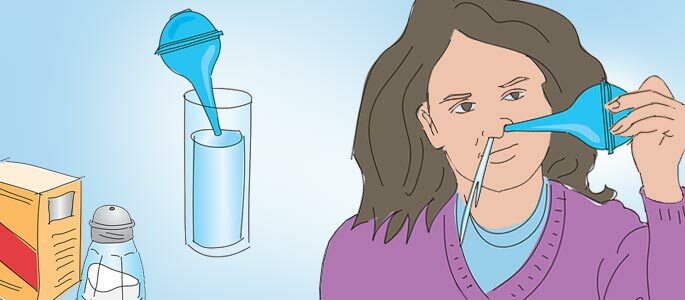
To carry out inhalation in the dishes with hot water, you need to add a glass of herbal infusion.To prepare the actual infusion, take a hundred grams of plants, pour a glass of boiling water and insist half an hour.As a raw material, eucalyptus, mint and thyme are taken.When everything is ready you need to tilt your head over the dishes with water and inhale with your nose and mouth pairs alternately.
Conservative treatment
Drug medications such as Dr Snoring, Asonor, Slipex can be used to fight snoring.All these products are available in the form of sprays, which must be sprayed before bedtime.The mechanism of action of the drugs is to eliminate the edema of the nasal mucosa, as well as increase the tone of the muscles of the pharynx and the soft palate.
If the snoring is caused by an infectious process in the upper respiratory tract, the doctor prescribes antiseptic and antibacterial drugs to the patient.If snoring is caused by allergic rhinitis, you can not do without antihistamines.
In addition, they are struggled with snoring by means of special devices, such as:
- Palatine implants;
- Capes.
Implant is injected into the soft palate, preliminarily anesthetizing this site.The inserted device strengthens the sky and prevents its vibration, thus stopping snoring.The procedure is carried out on an outpatient basis.
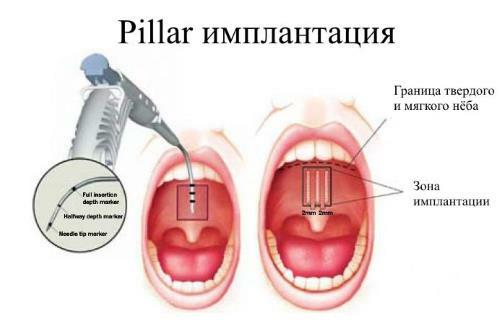
The cap is a plastic device that holds the lower jaw in the extended position.As a result, the muscles of the soft palate and tongue stay in tonus.Increases the elasticity of the pharynx, which prevents it from "falling off."Thus, snoring no longer occurs.
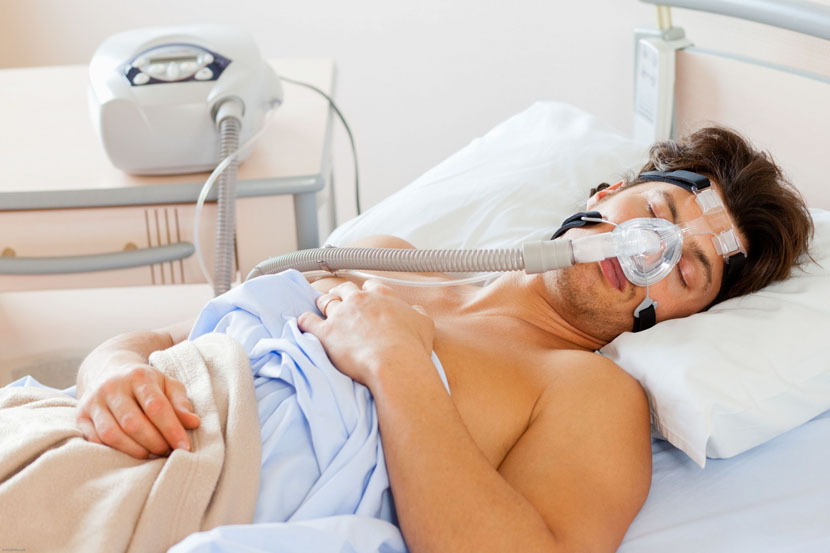 For the treatment of the syndrome of obstructive sleep apnea, the best way to apply the CIPAP method is.The procedure involves the use of an apparatus( compressor) that maintains positive airway pressure.The compressor passes air through the tube into the mask that the person wears before going to bed.Because of the constantly maintained positive pressure, the upper respiratory tract does not subside.The result is the absence of snoring and apnea.
For the treatment of the syndrome of obstructive sleep apnea, the best way to apply the CIPAP method is.The procedure involves the use of an apparatus( compressor) that maintains positive airway pressure.The compressor passes air through the tube into the mask that the person wears before going to bed.Because of the constantly maintained positive pressure, the upper respiratory tract does not subside.The result is the absence of snoring and apnea.
Surgical treatment
If a specific cause of snoring is identified, the doctor may advise the operation. So, depending on the reasons for snoring, the following operations can be performed:
- Uvuloplasty;
- Uvulopalatopharyngoplasty;
- Septicoplasty;
- Tonsillectomy;
- Adenoidectomy.
Uvuloplasty is a minimally invasive operation, the goal of which is a shortened palatal tongue.The operation is performed under local anesthesia by laser plasty or cryoplasty.After exposure to the laser or liquid nitrogen damage to the tissue of the tongue takes place with further healing and shortening of the length.After the operation, 85-90% of patients disappear snoring.
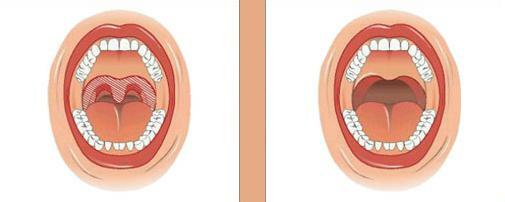
Uvulopalatopharyngoplasty is an operation that involves the removal of the tonsils together with the posterior edge of the soft palate, including the tongue.As a result, the oropharynx dilates.Technically, this operation is simple, but the patient needs to stay in the hospital under observation for several days.
The method is very effective in controlling snoring, but does not always eliminate the stopping of breathing in a dream.After surgery, approximately 90% of patients stop snoring.However, a marked decrease in the manifestations of the syndrome of obstructive sleep apnea is observed only in half of the patients.
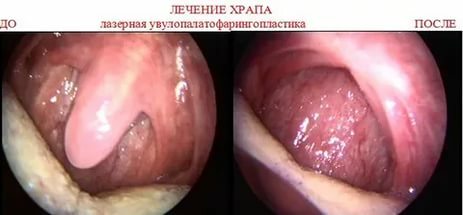
Septoplasty is aimed at correcting a curved nasal septum.Can be carried out both endoscopically, and with the help of laser technologies.
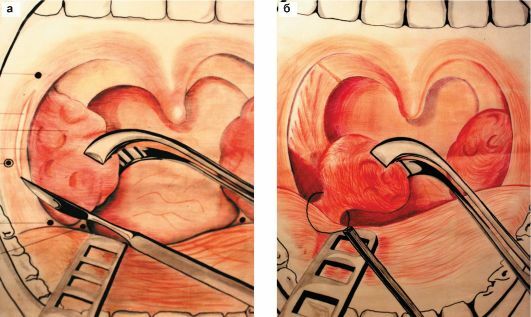 If snoring is caused by hypertrophied tonsils, tonsillectomy is performed.Removal of palatine tonsils is done in various ways: classical, laser, ultrasound, and also with the help of cryodestruction.
If snoring is caused by hypertrophied tonsils, tonsillectomy is performed.Removal of palatine tonsils is done in various ways: classical, laser, ultrasound, and also with the help of cryodestruction.
Adenoid operation is performed adenoidectomy.Removal of the amygdala can be performed with a scalpel or electrocoagulation.
Grigorova Valeria, medical reviewer

